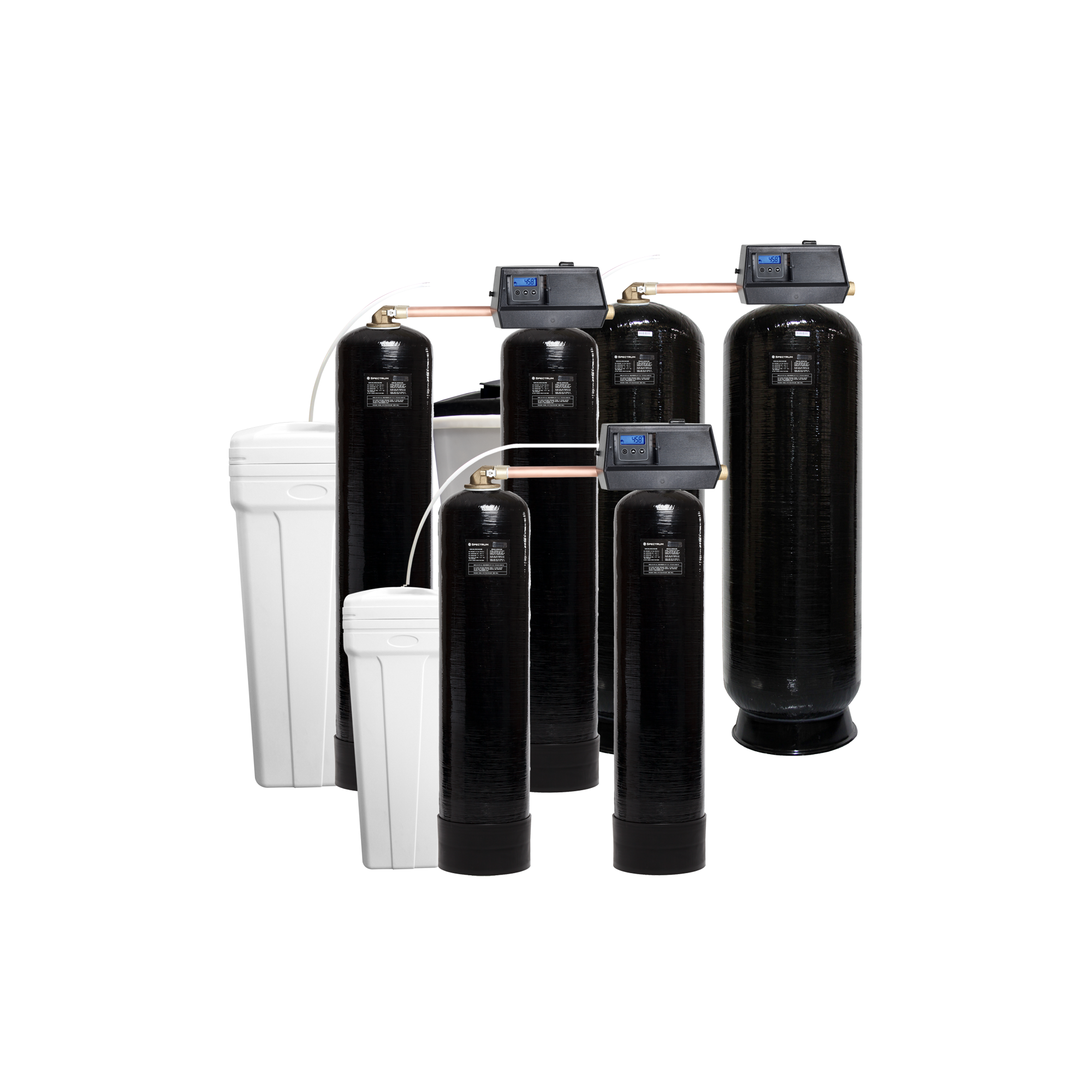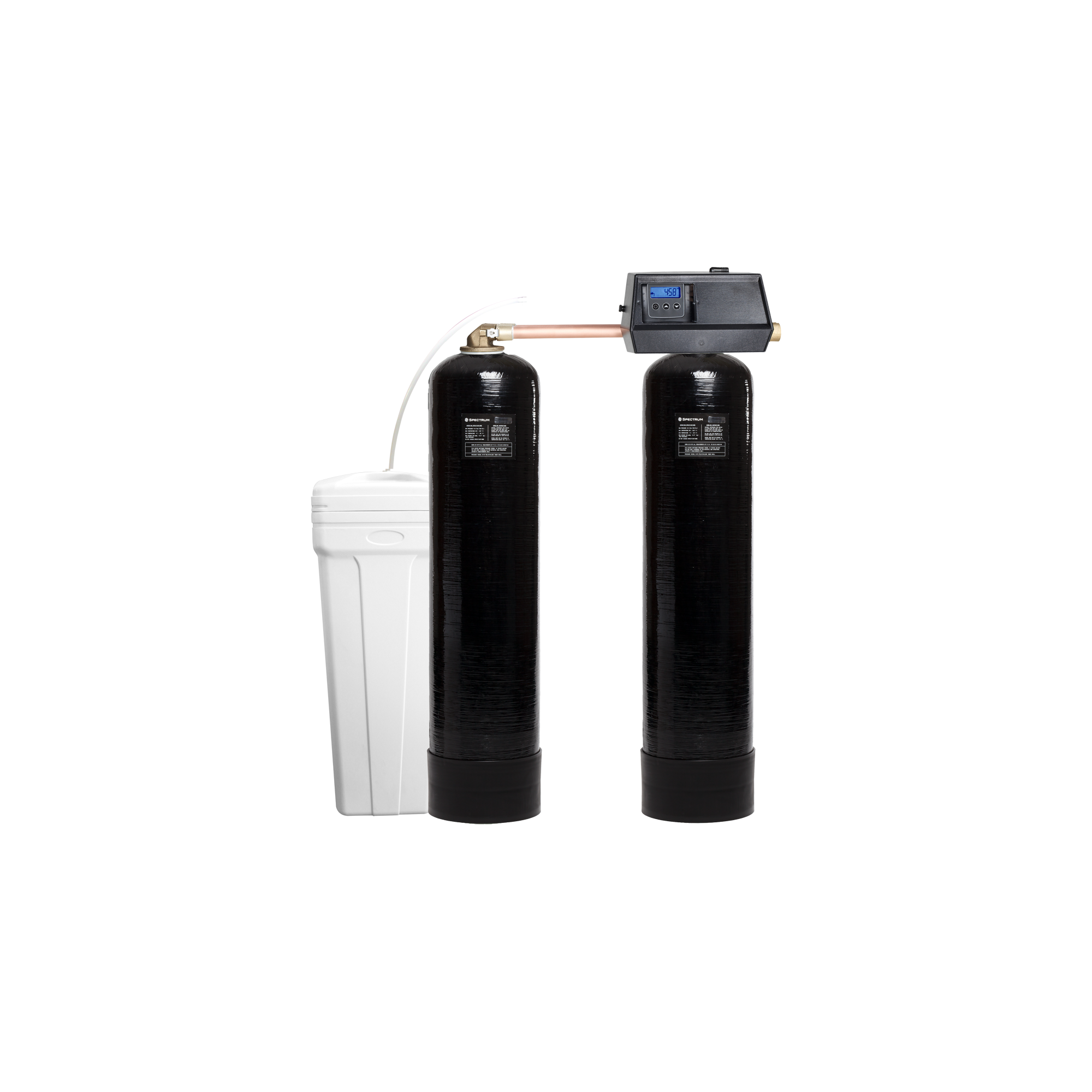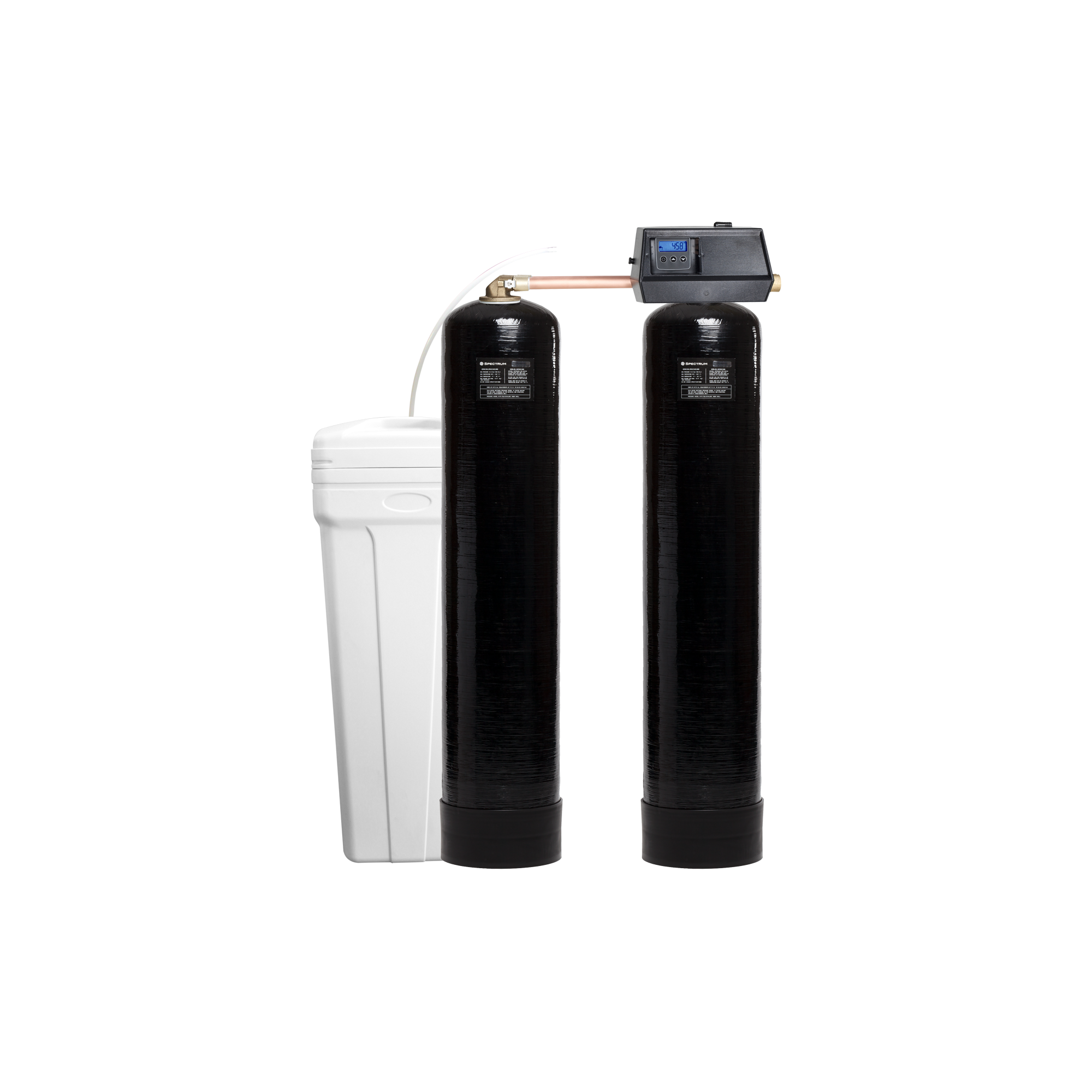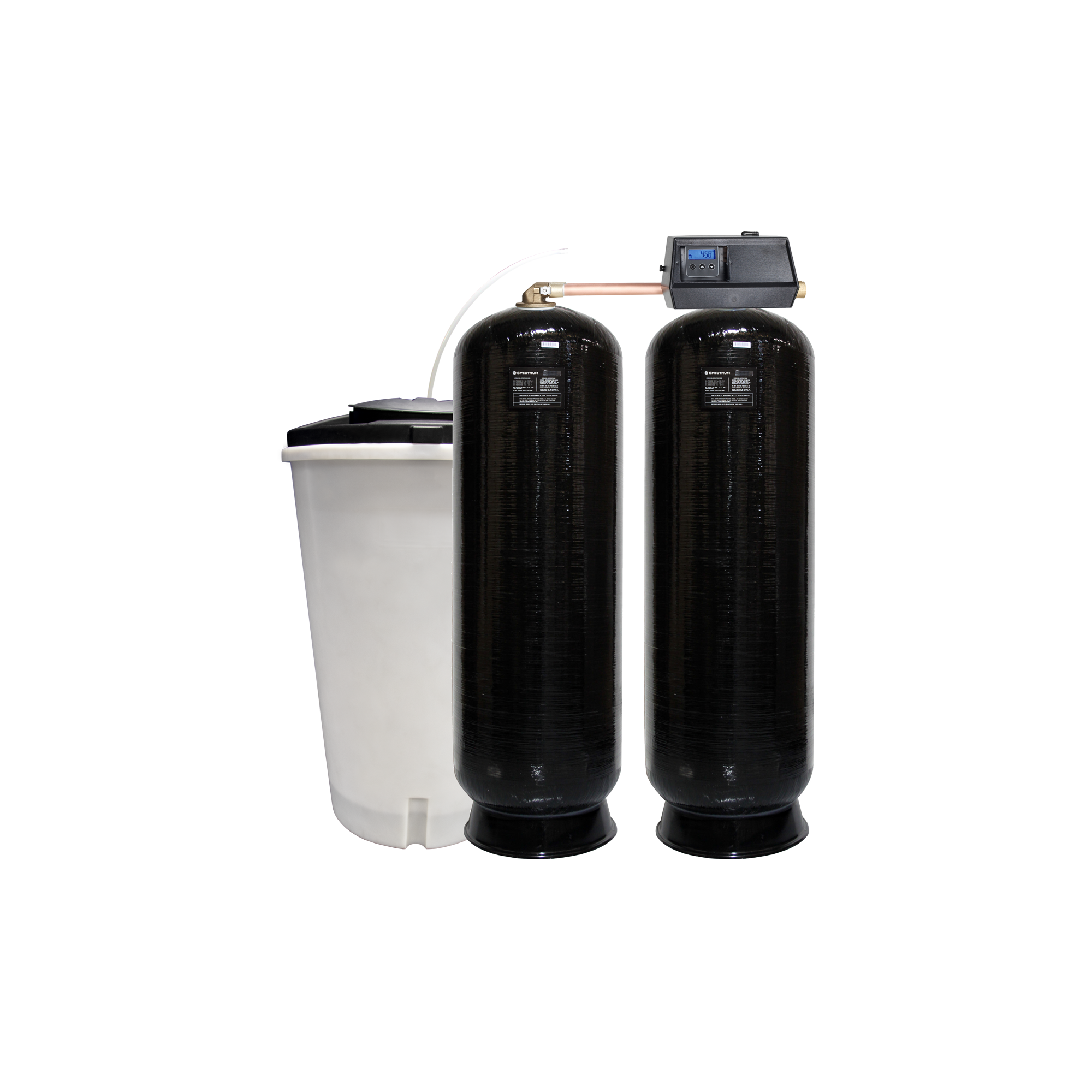Duplex Systems (PWS)
- Ready to install with vessel, resin, brine tank and brine valve system
- LCD display shows time of day and volume of water before next generation
- Volumetric control precisely measures the volume of soft water produced to optimise salt usage
- Minimal regenerations means less wastewater to drain during regeneration process
- Blending valve allows complete control over hardness
- Bypass valve supplied as standard to allow for hard water use if required
- PED compliant pressure vessels for reliability and peace of mind
- Laboratory water preparation
- Large scale commercial water treatment
- Boiler feedwater treatment
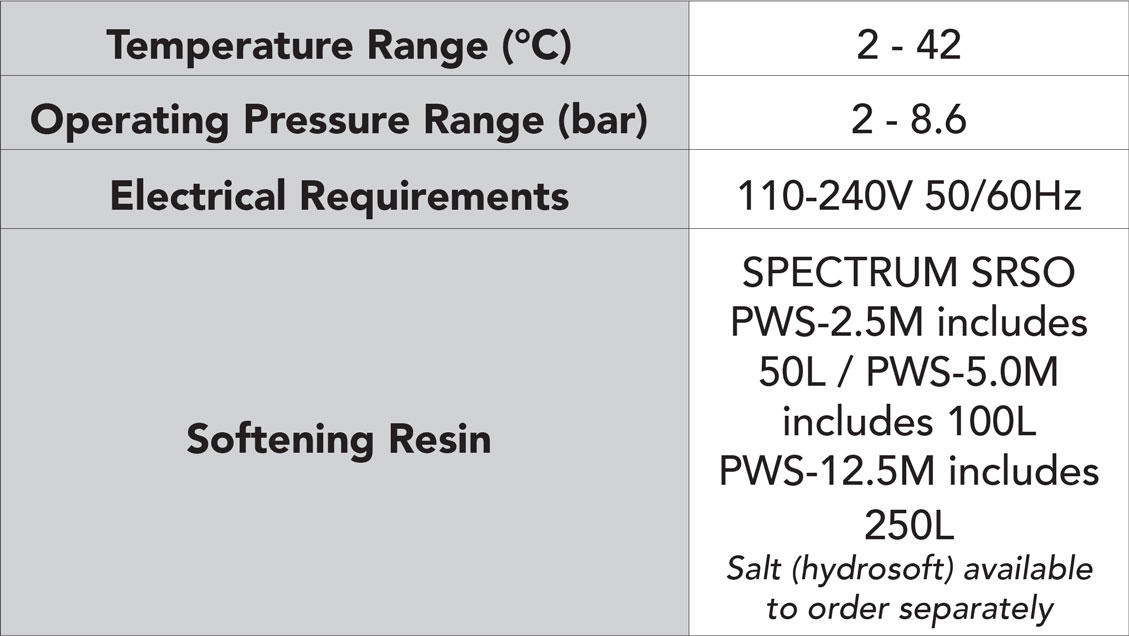

Features & Information
Upgraded performance, inclusion of the industry renowned Fleck valve, high capacities and a backup resin tank to eliminate downtime during regeneration sets the SPECTRUM PWS Duplex apart in industrial softening applications.
FAQs - PWS
Water softening is the process of removing minerals like calcium and magnesium from hard water. It’s necessary because hard water can cause limescale buildup in pipes and appliances, reduce soap’s effectiveness, and lead to other issues like dry skin and dull hair.
Softened water is safe to drink, but it may have a slightly elevated sodium or potassium content due to the ion exchange process. If you’re on a sodium-restricted diet, please take this into consideration.
The Fleck valve is renowned for its reliability and efficiency in water treatment applications. It plays a crucial role in controlling the regeneration process, ensuring efficient operation and minimal maintenance.
These duplex softeners can handle high capacities, with the ability to soften water up to 12.5 million milligrams (mg) of total hardness between regeneration cycles. This makes them suitable for even the most demanding soft water requirements.
